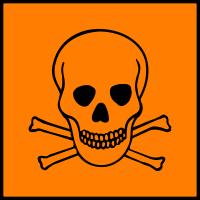|
Personal Protective Equipment
|
Eyeshields, Faceshields, full-face particle respirator type N100 (US), Gloves, respirator cartridge type N100 (US), type P1 (EN143) respirator filter, type P3 (EN 143) respirator cartridges
|
|
RTECS
|
UK8000000
|
|
Safety Statements
|
53-22-26-36/37/39-45
|
|
Storage Temperature
|
-20°C
|
|
German water hazard class
|
3
|
|
GHS Pictograms
|

|
|
GHS Pictograms
|

|
|
GHS Signal Word
|
Danger
|
|
GHS Hazard statements
|
H302-H360
|
|
European Hazard Symbols
|
 Toxic (T) Toxic (T)
|
|
GHS Precautionary statements
|
P201-P308 + P313
|
|
Risk Statements
|
60-61-22
|
|
Potency
|
0.25-100 ng/mL
|
|
Sterility
|
γ-irradiated
|
|
Suitability
|
suitable for cell culture
|
|
Gene Information
|
human ... PTGER1(5731), PTGER2(5732), PTGER3(5733), PTGER4(5734), PTGIR(5739)mouse ... Ptger1(19216), Ptger2(19217), Ptger3(19218), Ptger4(19219)
|
|
Apperance
|
powder
|
|
Solubility
|
ethanol: soluble1 mg/mL
|